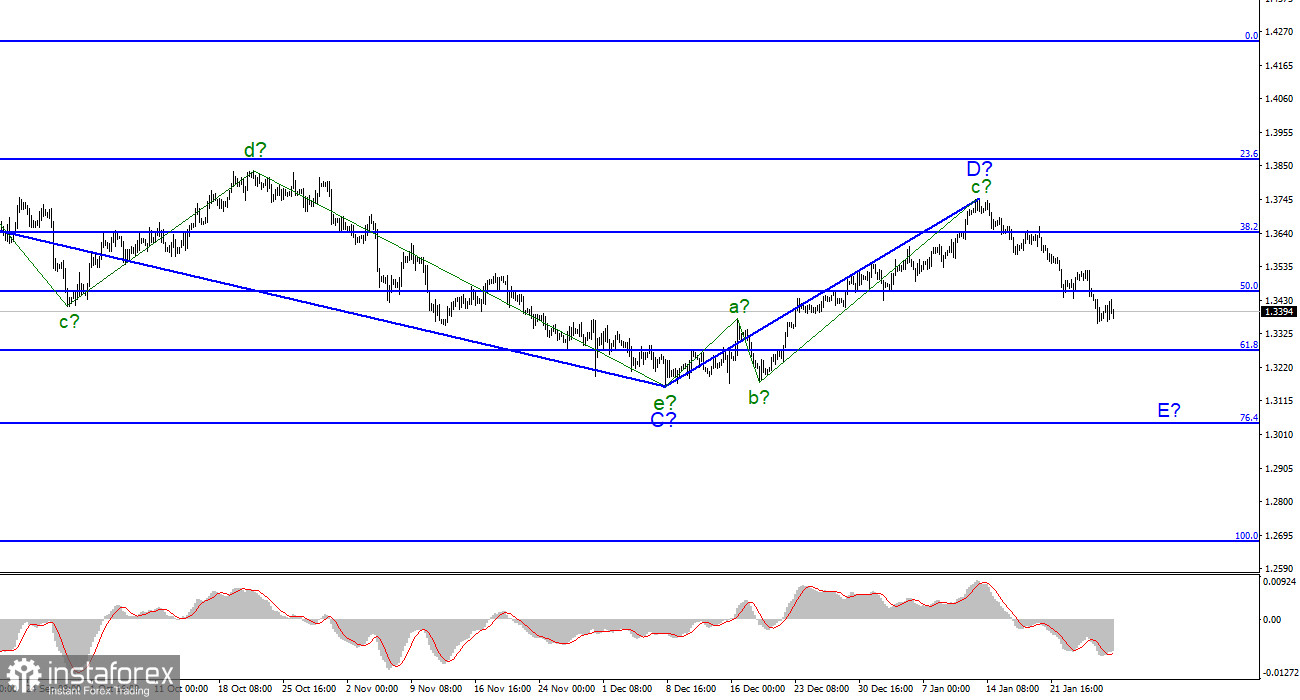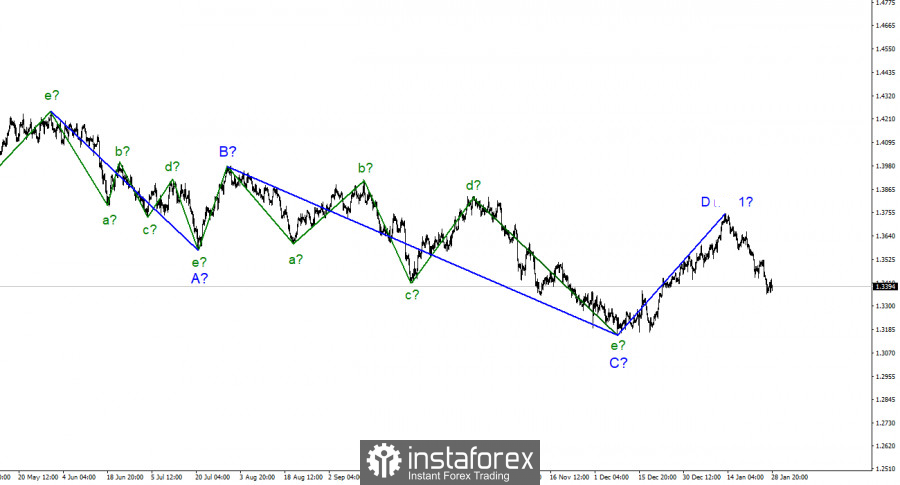
For the pound/dollar instrument, the wave markup continues to look convincing. In the last few weeks, the instrument has been at the stage of building an upward wave, which is currently interpreted as wave D of the downward trend section. However, if the current wave layout is correct, then this wave has completed its construction and the construction of wave E has begun. Thus, the entire downward section of the trend can take on an even more extended form. Wave D has taken a clear three-wave form and its internal wave marking does not cause any questions now. A successful attempt to break through the 50.0% Fibonacci level, which corresponds to 1.3458, indicates that the markets are ready for new sales of the British. Within the assumed wave E, lower-order waves are now being overlooked with great difficulty. There are five of them, but the low of wave E has not yet gone beyond the low of wave C. Thus, these may be waves of the most junior order. In other words, five waves are constructed as part of 1 or a-E. Both the euro and the pound may continue to fall in price in the coming weeks, as the wave marking for both instruments suggests a continuation of the decline.
The British can hope for a small increase if the Bank of England raises the rate.
The exchange rate of the pound/dollar instrument for January moved in the same way as the euro/dollar instrument. In the first two weeks of January, there was an increase in the instrument, and then a decrease. Wave E can take a very extended form, or it can be shortened. But so far there is no sign of the end of the downward wave for the British. In January, the market's attention was focused on America. In the UK, several important reports were released only a week earlier, but some of them turned out to be strong (unemployment rate, inflation rate), some failed (retail sales). Whatever the news background in Britain, both the euro and the pound moved identically. And this leads me to think that the market took into account only the American news background. And when it wasn't there, it traded based on the wave markup. Now that the wave pattern has remained relevant, the demand for the US currency must continue to grow. And for this, it is necessary that the markets either ignore the news background (which is unlikely to always be on the dollar's side now) or win back only the most important reports that would not violate the wave markup. I believe that the second option will be implemented. Thus, if the Bank of England raises the key rate next week, it may lead to the construction of a corrective wave 2 or b-E. After that, the decline in the quotes of the British may resume.
General conclusions.
The wave pattern of the pound/dollar instrument assumes the construction of an assumed wave E. A successful attempt to break through the 1.3458 mark allowed us to continue selling the instrument with targets located near the estimated 1.3271 mark, which corresponds to 61.8% Fibonacci. You can also sell using MACD signals "down". I am not considering alternative options right now, since there is no reason for this. The wave E can get a clear five-wave structure.

On the higher scale, wave D also looks complete, but the entire downward section of the trend does not. Therefore, in the coming weeks, I expect the instrument to continue to decline with targets below the low of wave C. Wave D turned out to be a three-wave one, so I cannot interpret it as wave 1 of a new upward trend section.





















